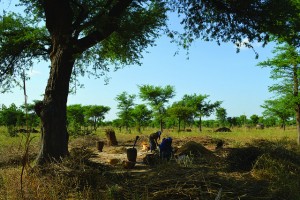Land restoration is a key theme at the 2015 Global Landscapes Forum (GLF), the biggest side-event of the climate change negotiations in Paris in December. The World Agroforestry Centre (ICRAF) is hosting a discussion on the role agroforestry can play in restoring landscapes. The following is an interview with session organizer Henry Neufeldt, Head of Climate Change at ICRAF.
Why is agroforestry an important instrument for landscape restoration? Trees on farms have many benefits. They create microclimates, enable carbon sequestration, support biodiversity, improve soil fertility and health, and provide nutrition. Most of these effects increase the resilience of the ecosystem by helping it to adapt and mitigate negative impacts/shocks. Fertilizer trees are particularly useful for land regeneration, soil health and food security; fruit trees are important for nutrition.
How did you realize the potential of agroforestry for landscape restoration?
It only works if there is a net positive return on investment. While the long-term positive benefits are evident, short-term returns are critical and need an integrated approach including annual crops and marketable products. People have to see that it works. This is necessary for short-term adoption rates and the long-term success of landscape restoration.
Why do you want to bring the topic to GLF 2015?
Landscape restoration through agroforestry contributes to climate change mitigation and adaption and to other ecosystem services; and it improves the livelihoods of smallholder farmers. Our discussion at the Global Landscapes Forum 2015 will focus on tree-based approaches to regaining ecological functionality and enhancing human well-being across degraded farming landscapes in the tropics.





